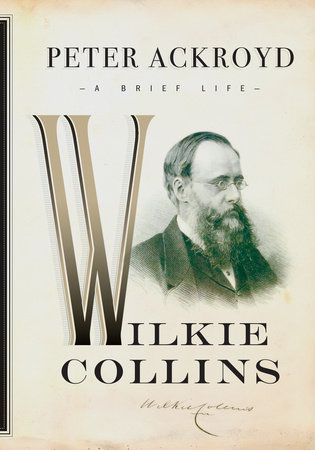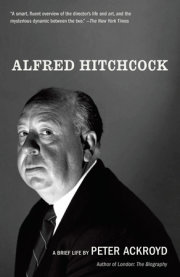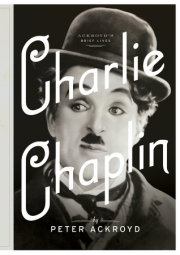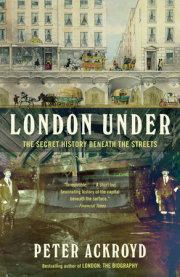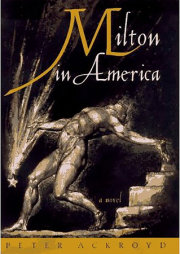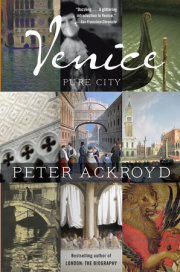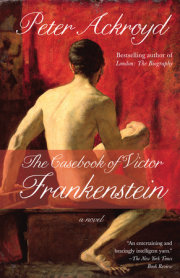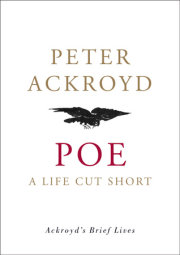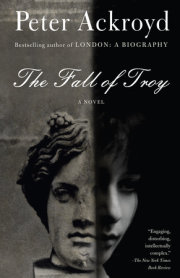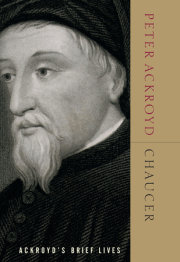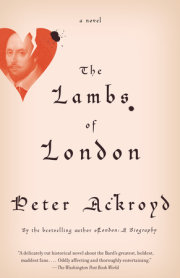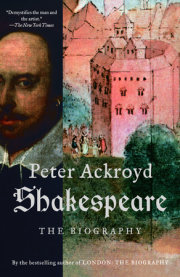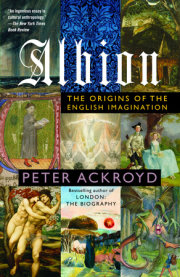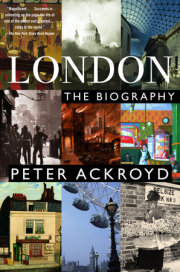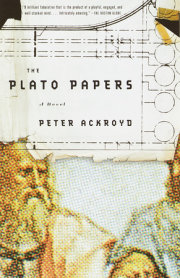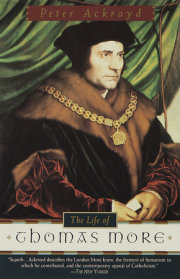CHAPTER 1
The Omni
The peculiar appearance of Mr. Wilkie Collins made him stand out in an “omni,” as the London bus was frequently called. At five feet and six inches he was relatively short even for the 1850s and 1860s. His head was too large for his body; his arms and his legs were a little too short, while his hands and feet were too small and considered to be “rather like a woman’s.” There was a large bump on his right temple as a result of a gynaecological accident; it was sometimes called “a swelling of the frontal bone.”
He was always aware of his oddity and declared that nature had in his case been “a bad artist”; he believed that his high shoulders, and his generally broad body, were “quite out of all proportion” to his large and intellectual head. He was extremely short-sighted, and always wore spectacles. In his thirties he grew a beard, thus lending much-needed symmetry to his face. In his published work he often draws attention to physical abnormalities that give a clue to distinctive character; he was very interested in what was then the science of physiognomy, but he also mentions among other ailments epilepsy, spinal defects, facial deformities, and paralysis of the limbs.
His friend, Holman-Hunt, gave an account of his demeanour. When welcoming a guest he would rock himself backwards and forwards while clasping his knees, and “ask with deep concern where you came from last.” Someone else described “a nervous movement of his knees, as if he were soothing invisible babies.” He could not stay still. When he sensed an attack of gout coming on, an ailment that afflicted him for much of his life, his response was “his fidgeting with one foot upon the floor.” When in repose, however, his face had a dreaming or reflective aspect; but in conversations his bright eyes behind his gold-rimmed spectacles fixed you like gimlets.
He wore colourful clothes, like many of his contemporaries, as if playing a certain part in the great general drama of life. His doctor, Frank Beard, explained that he would sometimes sit down to dinner “in a light camel hair or tweed suit, with a broad pink or blue striped shirt, and perhaps a red tie.” When photographed in New York, on a reading tour, he was dressed in a florid fur coat. He was recorded wearing “a linen shirt dashed with great, gory squares, cut low in the neck, and held together with a rakishly tied Belcher scarf” together with a bright blue jacket and waistcoat. He also owned a range of cravats, striped and spotted. Out for a walk in London one afternoon in his late fifties, wearing a smart paletot coat usually reserved for young men, he overheard a woman say to her companion, “To think of a man wearing such a coat as that--at his time of life!” Yet his preferred costume, when he was working quietly at home, was a dressing gown.
He was universally known for his amiability and general good humour; he was perhaps the sweetest-tempered of all the Victorian novelists. He did not have the hard and driven quality of Charles Dickens; he did not have the brooding and majestic air of George Eliot. He was “the least posé public man I ever met,” according to one companion; he was kind and ever approachable. He had no “side,” and seems to have been adored by the women of his acquaintance for his sly sense of fun and effortless charm. He set men at their ease with his cheerfulness and what was described as “the buoyancy of a youthful spirit.” He said of himself that dignity was not part of his nature. His description of one of his characters might be applied to him, that he was one of those men “whom everybody shakes hands with, and nobody bows to, on a first introduction.” He was always known simply as Wilkie, not as Collins or Mr. Collins.
---
The bus was known as the “omni” because it catered for everyone, and thus can be seen as an indispensable preliminary to the Parliamentary Reform Acts of 1867 and 1870. He liked to ride on the omnibus because he wished to immerse himself in what he called “the Actual,” as opposed to “the Ideal.” Among the routes adjoining his neighbourhood he might have taken that from the Yorkshire Stingo at Paddington to the Bank of England, passing along the New Road (now known as the Marylebone Road), Somers Town and the City Road.
It was a relatively expensive mode of transport--a shilling for a full ticket--but newspapers and magazines were provided free of charge. The bus could accommodate twenty-two passengers and Collins once wrote that “an omnibus has always appeared to be a perambulatory exhibition room of the eccentricities of human nature”; he liked to scrutinise “merely the different methods of getting into the vehicle and taking their seats, adopted by different people.” He saw the fashionable young woman in intensely dyed crinoline; he saw the banker, dressed in clerical black, wearing a stovepipe hat. He observed the stout gentleman in a white neckcloth, and the “shabby-genteel” man with a green bag. He may have noticed how the stout gentleman gave a poke to the “cad,” or conductor, with his umbrella for some infringement of the rules. He saw all the anxious, nervous, exhausted and ailing people of the city. In one of his novels, Basil, a young man falls helplessly in love with a girl he has glimpsed on the “omni.”
One reviewer described his fiction as “stuffed full” with incidents “as an omnibus is with passengers on a rainy day.” Safely ensconced in his seat he would have heard all the phrases of the age. It struck me all of a heap. I am dead beat. He was in a blue funk. I hardly know whether I’m on my head or my heels. He’s spooney enough to like lemonade. He’s a rum’un. That shook him up a bit. Tuck in. Ta‑ta, sergeant, ta‑ta.
He knew the route of the Paddington omnibus by heart, since for most of his life he lived in the neighbourhood of the New Road. Like most Londoners of the period he remained in the area with which he was familiar. Londoners had some inner guide to the nature of their terrain; they knew where to find the dry soil or the damp soil; they knew of the windy quarters and the sultry quarters; they recognised which neighbourhoods were healthy, and which were diseased.
He lived, apart from some residences of his childhood years, in a small patch of territory bounded by Oxford Street in the south and Regent’s Park in the north; the western frontier lies on the Edgware Road and the eastern is formed by Great Portland Street. Scenes from this territory are to be found in much of his fiction, with the immediate neighbourhood of Regent’s Park as a particular attraction. Marylebone is in fact one of the most respectable, and also one of the most dreary, areas of London. Most of it is resolutely bourgeois, with solid stuccoed or red brick houses ranged along grimly patterned streets. Yet Collins, of all people, realised that strange crimes and furtive passions might lie concealed behind the brick and the plaster.
The most sensational crimes of the 1860s involved fraud, or blackmail, or poison, where a respectable façade was most important; these were also the issues that arrested Collins’s attention. Thomas Hardy characterised the most successful fiction of the period as containing “murder, blackmail, illegitimacy, impersonation, eavesdropping, multiple secrets, a suggestion of bigamy, amateur and professional detectives.” It is the best possible summary of the art of Wilkie Collins. He celebrated what he described, in The Woman in White, as “the idea of something hidden below the surface.” In the process he created a fragile world racked with nervous tension, where the conventions of ordinary life concealed the burden of secrets and of irregular relationships. This was a world of confused identities, both sexual and social, in which no one had a secure home. This was the world of London.
CHAPTER 2
The Family
He came into the Marylebone world on 8 January 1824; his place of birth was a house in New Cavendish Street, and he returned to that street with a mistress thirty-five years later. He was baptised at the parish church of St. Mary-Le-Bone with the name of William Wilkie Collins, and throughout his childhood was known as Willy. It may be on the occasion of his baptism that his godfather, the painter Sir David Wilkie, astonished the family by peering into the baby’s eyes and exclaiming that “he sees!” As Collins remarked later, Sir David Wilkie was more familiar with puppies and kittens than with infants.
The house in New Cavendish Street was shared with his paternal grandmother and uncle; since the Victorians were preoccupied with theories of heredity, and of acquired characteristics, it may be worth tracing Collins’s own ancestry. It was believed in the family that they were descended from Samuel Collins, a seventeenth-century anatomist, and from the same family as William Collins, the once celebrated eighteenth-century poet. A more immediate influence may be found in his paternal grandfather, William Collins the elder. He was a native of County Wicklow but, like other young and hopeful Irishmen, he came to London to make his fortune; he fancied himself to be a poet, on the model of his supposed famous ancestor, but was obliged to earn a more prosaic living by setting up as a restorer and picture dealer in Bolsover Street, Marylebone. This was the street to which Wilkie Collins would later bring a second mistress. Thus is the web of London formed.
William Collins the elder, according to his grandson, was not daunted by his relative lack of success. He wrote “articles in the public journals, songs, fugitive pieces” as well as sermons and even a political pamphlet. His most significant production, however, was a narrative upon the travels and travails of a stolen painting. Memoirs of a Picture is a rambling and picaresque account of the world of thieves and forgers which Wilkie Collins himself came to relish. It provided the milieu which he borrowed for a tale of an art forger entitled A Rogue’s Life.
Yet the elder Collins was never able to free himself from what his grandson called “pecuniary embarrassment,” and the Collins family grew up in the shadow of poverty. When Collins died in 1812 he left his wife and two sons with nothing in the world; Mrs. Collins was obliged to sell her furniture and her household possessions, and the family was reduced to eating “scanty meals” off an old box rather than a table. This penury forced the young William Collins to earn his bread by hard work as a jobbing artist. It may also account for Wilkie Collins’s own caution and even parsimony in matters of finance. He was used to bickering with waiters and cab drivers.
William Collins, the father of Wilkie Collins, was twenty-three at the time of his parent’s death. He had been admitted to the Royal Academy Schools five years earlier, and had already shown landscape paintings at the Academy’s Summer Exhibition. He was now obliged to support his family and, with a combination of probity and hard work, he slowly made his way. He wrote in his diary that “as it is impossible to rise in the world without connection, connection I must have.” He sought out rich and influential patrons; he became the epitome of respectability and propriety; he was a fervent Christian who was outraged when he saw a neighbour nailing some nectarine trees to a wall on a Sunday. Yet social and professional anxieties were never very far away; this was an age in which it was all too easy to “break” and to go under. The solution was industry, dedication and unremitting hard work; in this respect, at least, his son would follow his example.
William Collins first acquired his reputation with The Sale of the Pet Lamb, a tender and harmonious interpretation of what in reality would have been a distressing occasion; the lamb was, after all, being sold to a butcher. You might be forgiven for thinking that the affecting scene was an aspect of some rural idyll, with the painter exhibiting what his son later called “simple yet impressive pathos.” It sets the characteristic tone of William Collins’s work in which sentiment was combined with naturalism.
The titles of the paintings convey much of their effect, and of their effectiveness, with a public that chose to conceal or repress the less palatable aspects of English life. The Burial Place of a Favourite Bird, Cottage Children, Blowing Bubbles and The Kitten Deceived do not convey the mood of a society already agitated by political discontent and economic distress. Wilkie Collins, in a memoir of his father, noted that the painter never depicted the “fierce miseries” or the “coarse contentions” that make up a part of life; he chose instead to portray amiable and light-hearted rustics, and to portray in the natural world all that was “pure” and “tranquil.”
In 1821, when his income and reputation were secure, he asked Harriet Geddes to become his wife. They had met seven years before, at a ball in Salisbury, but an impoverished young artist could hardly support a family. Harriet Geddes herself came from an artistic milieu. Her sister, Margaret, became a significant and popular artist who in her lifetime exhibited 147 paintings at the Royal Academy. Harriet herself had ambitions to go on to the stage, but this was not considered to be an ideal vocation. Instead she became a governess. But then, in the autumn of 1822, they were married in the English Episcopal chapel in Edinburgh. They were married in Scotland because of the complications of a new Marriage Act that had just come into force in England; this Act was designed “for the better prevention of clandestine marriages,” but its provisions caused such uncertainty that it was abolished in the following year. Wilkie Collins arrived sixteen months after their union.
He wrote later that his mother was “a woman of remarkable mental culture” who bestowed upon him “whatever of poetry and imagination there may be in my character.” He said on another occasion that he had inherited her “spirits.” She was undoubtedly sociable and sharp-witted, with that independence of temperament that her son gave to his favourite heroines. He described a governess in one of his novels, No Name, as “a woman who looked capable of sending any parents in England to the right-about, if they failed to rate her at her proper value.” Charles Dickens’s daughter described her, in later life, as “a woman of great wit and humour--but a devil!” Kate Dickens was known for her somewhat acerbic asides--she once described Wilkie as being “as bad as he could be” for keeping a mistress--and may have meant no more than that Harriet Collins was occasionally cutting or caustic in conversation.
---
In the second year of Collins’s life the family spent the summer and autumn in a cottage in Hendon; soon after their return, in the spring of 1826, they moved from New Cavendish Street to Pond Street by Hampstead Green. Theirs was the second house in a row of small houses running down a hill, in a spot now covered by the Royal Free Hospital. Hampstead became for Collins another sacred spot. It is of course the setting for the first appearance of the woman in white, at the junction of Finchley Road with West End Lane and Frognal Lane, and was in Collins’s childhood a village among the fields. His father was therefore, according to Collins, "surrounded by some of the prettiest and most varied inland scenery that this part of England presents." The family was enlarged here by the birth of Charles Allston Collins, at the beginning of 1828.
In his own account the childhood of Wilkie Collins was an unexceptionable if happy one. "Tell Willy," his father wrote, "I have this day picked up two nice little scuttle-fish bones for him." William Collins sketched his infant son, showing his nervous and delicate features with the slight protuberance above his temple. The novelist remembered sitting on the knee of his godfather, Sir David Wilkie, and watching him draw cats and dogs and horses. He went skating with his younger brother, and averaged thirty tumbles on each outing.
There were the usual family holidays. In the summer of 1829 they travelled to Boulogne for six weeks, in the hope that a change of air might restore the health of his ailing grandmother. They rented a house in the marketplace, from the window of which William Collins sketched the more picturesque aspects of French peasant life. It was here that the young boy was told one of those melodramatic stories that made such an impression upon his imagination. Years later he remembered how a Boulogne fisherman had rescued a black seaman from a shipwreck; the mariner was refused admission to any house, as a result of the restrictions of quarantine, and so the fisherman lay alongside the man all night "endeavouring to restore the dying negro by the vital warmth of his own body." His efforts, unhappily, did not succeed.
In the early autumn of the year the Collins family migrated to Ramsgate, a resort to which Wilkie returned throughout his life. In his early years there was really nothing there except the sea, but the sea haunted Collins like a passion; in the dusty streets of London he longed for it and scarcely a year passed without a visit to Broadstairs or Ramsgate—or even further afield, to Cornwall or the Isle of Man.
They had moved to a larger house in Hampstead Square but then a year later, in 1830, they made the journey south to Bayswater. The house in Porchester Terrace lay at a distance from "the Oven" or "the Great Wen," as London was known, but it was not immune from the agitation of the larger world. Collins remembered the demonstrations of 1832 surrounding the passage of the great Reform Bill. "My poor father," he wrote, "was informed that he would have his windows broken if he failed to illuminate"; that is, he was obliged to put a lamp or candle in every window. The two boys were "mad with delight," and saw the demonstrators "marching six abreast (the people were in earnest in those days) provided with stones." William Collins himself was a high Tory, and did not look with favour upon such celebrations. He may have been the inspiration for a dinner party in
The Moonstone when one of the company "growing hot at cheese and salad time, about the spread of democracy in England, burst out as follows: ‘If we once lose our ancient safeguards, I beg to ask you, what have we got left?’ . . ."
William Collins also had more private complaints. In the summer of 1833 he reported to his wife, from the country house of a patron, that "my nerves are stronger and the pain in my face is fast decreasing." He wrote in his diary that "I am sadly low in mind at times, and in body weak." It is tempting to see the laws of heredity in operation. Both Wilkie and Charles Collins suffered from "nerves" and Wilkie, in particular, was plagued by pains in his face and eyes. Mrs. Collins was also treated for "nerves" in Brighton. This was an age of anxiety and in one of his novels Collins described "these days of insidious nervous exhaustion and subtly-spreading nervous malady." Far from being the boisterous and confident masters of empire, the Victorians were prey to nervous derangement as a consequence of what they called "the battle of life."
At the beginning of 1835, at the age of eleven, Wilkie Collins was enrolled at the Maida Hill Academy, a day school just off the Edgware Road. He seems to have been a model pupil because, at the end of his first year, he won as first prize in class a two-volume set of Southey’s
Essays. He kept the books in his library for the rest of his life. In the schoolboy community, however, success is not necessarily applauded. In an essay he wrote that "the idle boys deserted him as a traitor, the workers regarded him as a rival; and the previous winner gave him a thrashing." Wilkie Colllins did not like school.
He was also finding out for himself the joys of private reading. He devoured his mother’s collection of Gothic romances while discovering such staples of childhood as
The Arabian Nights, Robin Hood and
Don Quixote. He worshipped Walter Scott and admired Byron. It might plausibly be suggested that he always preferred "light" reading; he was by no means a scholar or an intellectual, and preferred adventure to analysis.
On his frequent trips away from home William Collins tried to supervise his sons’ moral education. "Tell the dear children," he instructed his wife, "that the only way they can serve their parents is to obey them in all things: let Charley find out the passages in Scripture where this duty is most strongly insisted on, and write them down for me." He urged the boys themselves to "go on praying to God, through Jesus Christ, to enable you, by his Holy Spirit, to be blessings to your parents."
These moral admonitions may have meant very little to Wilkie Collins. In later life he scorned pious sentiment. "You keep on cramming church down his throat," the father of one six-year-old boy is told in Hide and Seek, "and he keeps puking on it as if it was physic . . . Is that the way to make him take kindly to religious teaching?"
Yet the father’s sense of religious obligation does not seem to have curtailed the social life of his family. He of course knew many of the eminent artists of the period, but his acquaintance stretched to the more interesting poets. Samuel Taylor Coleridge, for example, seems to have struck up a friendship with Mrs. Collins. Wilkie once recalled to a friend an occasion when the poet broke down in tears while describing to her his addiction to opium. "Mr. Coleridge, do not cry," he remembered her as saying, "if the opium really does you any good, and you must have it, why do you not go and get it?" Since Wilkie was himself at this time addicted to laudanum, his precocious memory may have had something to do with self-justification.
In this childhood period Wilkie, by his own account, seems to have suffered from the afflictions of first love. She was the wife of one of his neighbours, three times his age. He was so obsessed by her that he took a violent dislike to her husband and ran away whenever he encountered him. He could not of course take a "liberty" with her, and so he suffered in silence. His susceptibility to women is obvious throughout his life, and he seems to have been in love with half of his female acquaintance. He needed the society of women and, with two mistresses to keep him company for much of his life, he clearly needed more intimate attentions. He told his friends, in later life, that his sexual initiation came under a foreign sky.
Copyright © 2015 by Peter Ackroyd. All rights reserved. No part of this excerpt may be reproduced or reprinted without permission in writing from the publisher.

